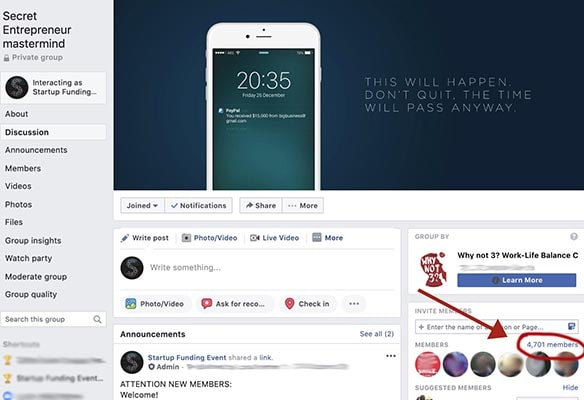Born in Utah, Lance Allred is the NBA’s first legally deaf player. With 75-80% hearing loss, he’s been on an adventure his whole life. Allred grew up in a fundamentalist Mormon polygamist commune, but his family broke away from the church a few years later.
He didn’t have a normal childhood like many others. In the 8th grade, he played basketball for the very first time. Quickly picking up the game and having a major growth spurt, many colleges tried to recruit him. He then wrapped up his college career as the third-best rebounder in the nation behind Paul Milsap and Andrew Bogut.
In 2005, Allred turned professional. After some stints in Europe and the NBA Development League, he finally made it to the NBA. In March 2018, the Cleveland Cavaliers signed him and he made his NBA debut. He finished his professional basketball career playing overseas in Japan and Mexico.
Today, he is retired from basketball but has begun a new journey. An inspirational speaker, author, and TEDx star, Allred has penned three books. Gathering all his experience as a deaf person and former professional basketball player, he shares with the world his thoughts on leadership, perseverance, and grit.
Here are 10 things I’ve learned from an NBA player
- Two types of failure
The first type of failure covers stepping outside of your comfort zone and taking a risk. Whereas the latter is you staying in your safe bubble. You don’t dare to step outside nor do you dare to make any mistakes. You choose to stay inside and be mediocre.
Failure is something that should be seen with a positive light. It’s acceptable to fail if you’re willing to learn from it. As a huge part of success, you will often see many greats and entrepreneurs who are brave enough to fail many times before they make it. If you’re not willing to get out of your bubble, there will be no changes in your life and everything will be stagnant.
Allred has faced so many challenges in his life. Despite his hearing disability, he wanted to do more with his life. It started with his pure determination as a kid. He put his hearing aids on, went for speech therapy classes, and learned how to read people’s lips. - Live in the present
Every person has memories of the past. You might have failed before or missed a game-winning shot. If you keep replaying those memories, you won’t be able to move on. All these negative thoughts will just make you worry even more about something you can’t change. What matters is what is happening now. In life, you’ll be given the chance to do something over again. If you get that opportunity, try to make the best of it. As a result, you’ll live a happier and more fulfilling life. - The balance between masculinity and femininity
It’s good to have a balance between masculinity and femininity. If you’re masculine, you know when to be aggressive, when to attack. At the same time, you also know when to be feminine. This means that you know when to delegate and share responsibilities.
Allred refers to Michael Jordan as an example. In the Netflix documentary, ‘The Last Dance’, you get to relive the greatest moments of Jordan’s prolific NBA career. He was the go-to guy that loved to take the winning shot. Everyone thought he was going to take all the last shots. However, there were some crucial moments when he chose to trust his teammates. With the score leveled, a few seconds left on the clock, and the opposition heavily guarding him, he chose to pass the ball. His feminine side knew it was the best decision to delegate. And the result was a victory. - Own up to your mistakes
As humans, we make a lot of mistakes. It’s inevitable. But when we do make mistakes, we should own up to them. Based on his experience, Allred says that 90% of people operate in fear, whereas 10% operate in trust. Many fear that they will lose their jobs or appear weak if they admit to their mistakes. But in all fairness, taking accountability and trying to rectify the situation is definitely the better path. It might be embarrassing and painful, but it’s the right thing to do. It’s about being responsible and becoming a better person. You’ll earn respect as well. - Social media followers don’t matter
We live in a superficial world where people are constantly competing. We’re so engrossed with the number of followers our competitors have, we resort to buying them. Keep in mind that it’s not about the quantity, it’s quality.
Influencing is not hard to do. Trust your message and content. Keep an eye out for authenticity. You can do this by checking that comments are real and do not only consist of emojis. Because these days, many influencers use engagement pods. These pods have worked a way around the system. The influencers get updated when there’s new content by someone from within the group, prompting them to engage with that new post. Not authentic at all. - The essence of leadership
Leadership is not a game of power or ego. It’s not about being the main guy. A true leader doesn’t care about self-glory. He or she doesn’t need followers for validation. A good leader is someone who is willing to give you feedback and vice versa. Someone who would take the time and effort to sit down with you 1 on 1 and figure out how to take things to the next level. Winning a match or winning in life is about being transparent and caring about each other. - Perseverance
According to the Merriam-Webster dictionary, perseverance is defined as a “continued effort to do or achieve something despite difficulties, failure, or opposition”. No matter how big or small your goals are, you must work hard to achieve them.
It took Allred 10 years to live his dream of being an NBA player. Most rookies enter the NBA in their early twenties, but at 27, he was finally called up to play for the Cleveland Cavaliers. The long training hours and years of playing in the European and NBA Development league paid off. - There are no shortcuts
You may often hear people say they want to be millionaires by the age of 30 and so on. But not everyone has what it takes to reach for the stars. You’ll need a ton of discipline and routines to forge your path to success. It’s not going to be handed to you. When you finally achieve your goals, you’ll be able to look back on your journey and realize where you could have taken shortcuts. But these learning lessons only come after you’ve walked down that path. The ability to work hard is the greatest talent of all. It is too often that recruiters only search for talent. Little do they know that it is a long road to success requiring a combination of multiple factors. - How to captivate your audience
After many years of playing professional basketball, Allred embarked on a new career path. As a motivational speaker, he shares that the audience remembers what they feel, not what they hear. When planning your content, always think about what your audience wants to experience.
People are tired of perfectly polished presentations. They don’t want to hear cliche phrases or other people’s quotes. Share your authentic human journey. Keep it real. - Adapt to new situations
Given recent circumstances, you learn there are some things you have no control over. No one was ready for the pandemic. But instead of moping around and victimizing yourself, you have to accept the situation and be present. Think about your next move.
Right before coronavirus struck the world, Allred had released his most recent book and he had plans to promote it around the country. Like many others, his plans were ruined, but he decided to digest all the chaos in the world and find the cracks. Seeing opportunity in things, he has brought his thoughts to digital platforms. He has also developed online courses and started to do 1-on-1 coaching as well.
Here is a man who has been through some rough times. Learning basketball later than most kids and with a disability, he persevered and never backed down. A lot of hard work, discipline, and sacrifices were made to make it to the NBA. And although it took him a decade, which is longer than most rookies, he never stopped chasing his dream.
Giving up has never been an option. On many occasions, life has dealt him a bad hand, but he has always accepted the situation and found ways to figure things out. Through his many life experiences, he has gained insight and perspective on how we humans should be living our lives.
Community

Congratulations on reaching the end!
Check out our podcast Impact Talks, where you can listen to high-profile experts from various backgrounds!
Join our Facebook Group Community with over 4,700 entrepreneurs, innovators, and creators by Startup Funding Event, where you get access to free live training, daily Q&As, design templates to get your business started, and support from the SFE team. Join here!















